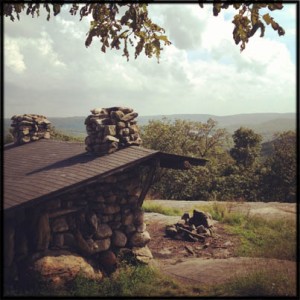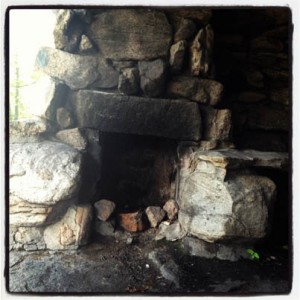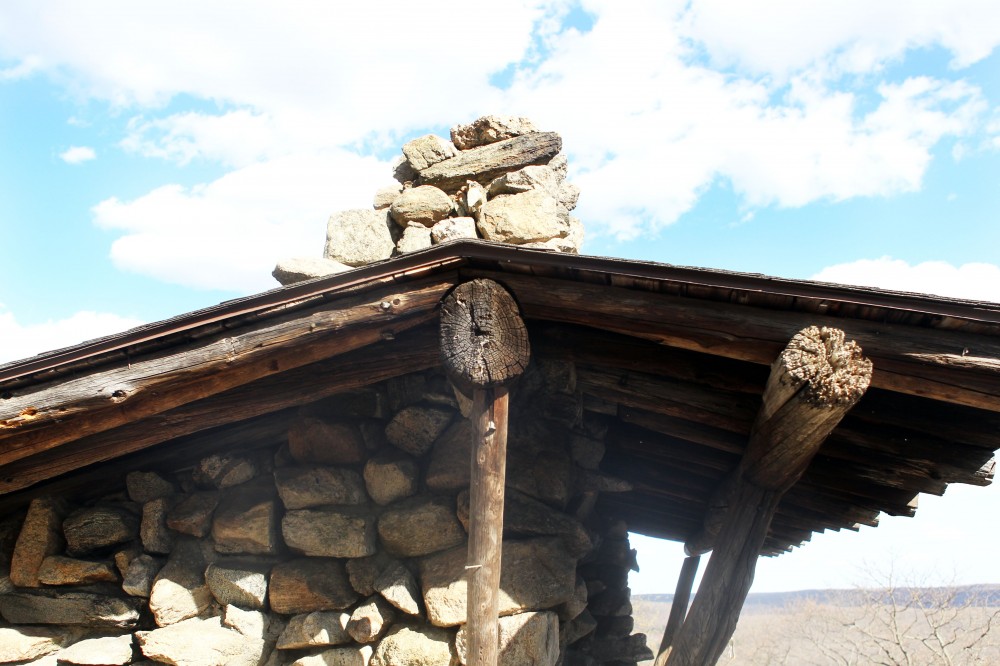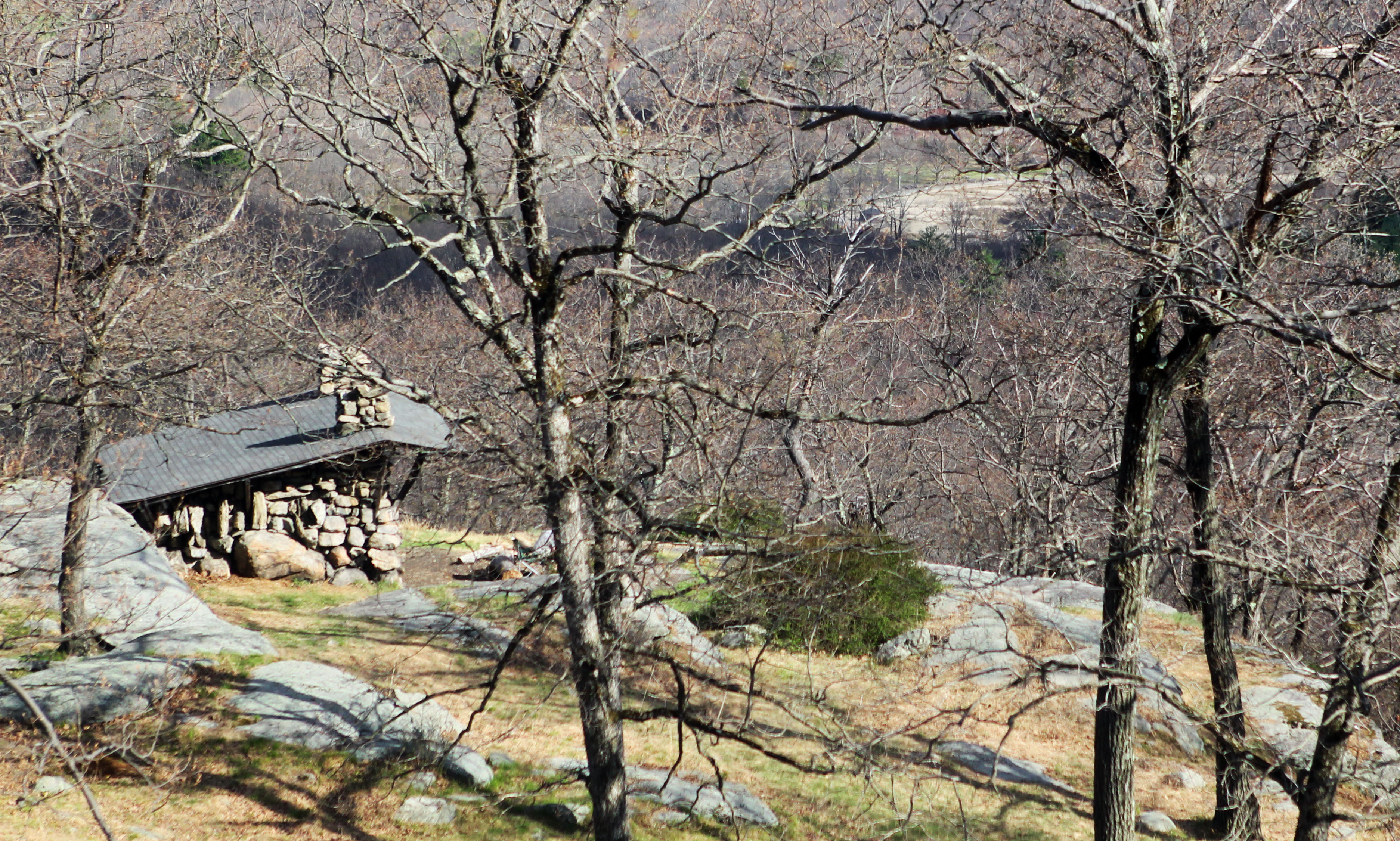
Lean-tos of Harriman State Park — including beautiful Tom Jones shelter — are ideal refuges from New York City life, and for sleeping under the stars. ©www.myharriman.com
“The stone cabin is placed on a broad, flat ledge on the eastern brink of the mountain, with a view of almost 180 degrees, northeast, east, southeast, south and southwest, across the hills. Four lakes are visible: Little Long Pond and Middle Kanawauke to the northeast, Lower Kanawauke to the east and the west arm of the new Lake Sebago, the largest of the ten artificial lakes in the park, to the south. A fifth lake will soon be added when the Beaver Pond meadow is dammed. A circle of summits, 1,000 to 1,300 feet high, closes the horizon toward the Hudson”. — Raymond Torrey, The New York Times, 1926.
The first time I discovered one of Harriman State Park’s shelters, I couldn’t believe that such a thing existed, that it was free to sleep in, that you didn’t need a reservation, and that — of all things! — it had not one, but two, inside fireplaces.
There’s something about coming upon one of these three-sided stone houses at the very top of a bald hill, in the middle of nowhere, that makes you feel as though you’re being welcomed. Sometimes, in colder weather, you can smell the smoke rising from a firering long before you’ve reached the shelter.
Harriman contains nine such stone lean-tos to shelter you, whether overnight or just for a little while.
You don’t need to reserve these shelters ahead of time, or sign in anywhere to use them. They’re strictly first-come, first serve. Lean-to etiquette asks you to share your lean-to with strangers as they arrive, but if you’re uncomfortable with this arrangement, or if there are too many people jostling around in there, you can always throw up a hammock in the vicinity. All lean-tos have more than one outdoor firepit. Some of them have extensive dispersed campsites surrounding them.
Make certain you carry enough water with you if you’re staying overnight — most shelters do not have dependable water supplies nearby.
Officially, dispersed camping within Harriman is for Appalachian Trail or Long Path thru-hikers only. Everyone else must camp at (or near) the lean-tos.
- Bald Rocks (Ramapo-Dunderberg Trail). Massive local granite stones make up his walls, with a nice fireplace inside and a firepit outside. The surrounding area is grassy, with trees close enough to allow hammocking, but not too tight to make you feel like you’re in the woods. Because you’re not — you’re in a lovely grassy field on top of a hill. Great views, too! The trails you’ll use to get to Bald Rocks are some of the best in the park, too, and you’ll be camping near some of Harriman’s coolest sights: Bowling Rocks, Ship Rock and the spine of Hogencamp Mountain. Nice.
- Big Hill (Suffern-Bear Mountain Trail & Long Path). Big Hill is a beautiful lean-to: stone, great view of New York City, nice location. The areas surrounding the shelter is grassy and open, and the feel is less woodsy, more mountaintoppy. There are two interior fireplaces in the shelter, and a big fire ring just outside the shelter, with views to the skyline. Other camping areas are tucked away in the surrounding shrubs and grasses, and while you’ll never be completely alone during the busy season, the vibe — lots of campers under the stars — is pretty cool. Climb the nearby Jackie Jones fire tower.
- Dutch Doctor, White Bar Trail. Two miles from Johnsontown road and you’re at Dutch Doctor, a large stone structure with wooden floors and generous overhand.
- E.D. Stone Memorial, Suffern-Bear Mountain Trail. Boulders make a three-sided lean-to, and a sleeping platform and fireplace supports the roof on the lean-to’s open side. Sleeps about 8.

Typical fireplace in a stone shelter in a Harriman lean-to (Big Hill Shelter, Long Path). ©www.myharriman.com
- Fingerboard, Hurst Trail. Wide, squat stone shelter, built in 1928 entirely on a rock ledge. It is equipped with 2 fireplaces on each side wall, and sleeps roughly 8 people. The shelter faces east toward a wooded valley and Lake Tiorati, with wide grassy areas surrounding. There is an active spring at Fingerboard, right below the shelter as you face out. If dry, keep walking down the streambed for this spring before going all the way to the lake for water. It usually reemerges further down.

Lean-tos in Harriman — like Big Hill shelter — are tattooed with the names of long-gone hikers. ©www.myharriman.com
- William Brien Memorial (formerly Letterrock), Appalachian, Ramapo-Dunderberg and Menomine Trails. Brien Memorial is one of my least favorite shelters. Unlike to some of the others, it doesn’t offer a view from a hilltop, and doesn’t have an interior fireplace. Tucked into a notch under a boulder scramble on the AT, the shelter has two bunk bed platforms that are in decent shape (as of July 2013). A small stone-box spring may be found through early summer on the blue-blazed trail, just below the shelter, but don’t bet on it for water after the heat of summer has set in. You can hike down the yellow-blazed Menomine Trail toward Silvermine Lake — about a half mile — to fill up your water jugs. Brien Shelter is surrounded by plenty of trees for hammocking.
- Stockbridge: This shelter seems almost balanced on top of a granite peak. It’s a nice hike to Stockbridge, and an easy one, too, if you park at Silvermine and take the yellow-blazed Menomine Trail across Seven Lakes Drive. Lovely, cozy. The tin roof makes it sound even better when it rains. Don’t forget to also check out the Cave Shelter, located further along the Long Path to the east.

- Tom Jones (pictured): My favorite. Cresting out over Tom Jones mountain, you’ll see the shelter crouching on a lower rock, looking for all the world like a picture from the Outback. Like Bald Rocks and West Mountain Shelters, Tom Jones has a great feel. It’s not unusual to find it occupied, because it’s an easy hike in from the lot on Rte. 106. Tom Jones is surrounded by sweet, grassy landscape and a rocky mountain spine. Great views. Two fireplaces inside; benches and high wooden platform for sleeping. You can download a PDF of an article from the New York Times in 1927, containing a wonderful, romantic and evocative description of the “newly-built” Tom Jones Shelter, here: Newly-built Tom Jones Shelter: A Description by Raymond Torrey, 1927. For more on the hikes in the Tom Jones area, see our post about one parking lot, two great shelters.
- West Mountain. There’s a reason this beloved shelter is so popular (especially on weekends): unmatched views to the distant New York City skyline, an interesting hike in along the Timp-Torne Trail, and the chance to meet some resting AT thru-hikers. The section of the Timp-Torne that stretches away from the West Mountain shelter makes the hike in so worth it.
Add your comments; we’ll add to this information page. Thanks!
[contact-form][contact-field label=’Name’ type=’name’ required=’1’/][contact-field label=’Email’ type=’email’ required=’1’/][contact-field label=’Website’ type=’url’/][contact-field label=’Comment’ type=’textarea’ required=’1’/][/contact-form]




